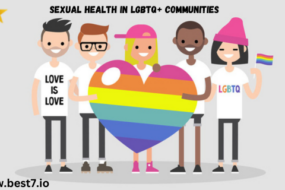
2021, the second year of Africa’s war against COVID-19, was challenging. Third and fourth pandemic waves and global COVID-19 vaccination inequality posed challenges. For WHO African Region nations, these obstacles were compounded by additional humanitarian crises, with 38 of 47 countries facing some level of food shortage. Reasons ranged from extreme meteorological occurrences to political upheavals or conflicts, further limiting the pandemic response.
Since the first COVID-19 case in Africa was announced on 14 February 2020, numerous countries have led the response. On 4 March, Nigeria sequenced the SARS-CoV-2 genome. Botswana and South Africa detected Omicron, the most transmissible COVID-19 mutation, in 2021.
The World Health Organization (WHO) predicts that COVID-19 deaths in Africa will drop by 94% in 2022 compared to last year. The WHO attributes the drop to higher immunization, better pandemic response, and natural immunity from earlier epidemics.
According to a study that was conducted and released by the World Health Organization (WHO) early week of April 2022, more than two-thirds of Africans have been infected with COVID-19 since the epidemic began. This number is 97 times more than the number of reported confirmed cases.
As of May, Africa had reported over 11.8 million confirmed COVID-19 cases and more than 250,000 fatalities since the pandemic began, according to WHO Africa, which will disclose more modelling details later in the day. Richer countries and southern African states have double the mortality rates of poorer ones in other areas of Africa, the WHO found.
If present variations and transmission patterns remain the same, the research predicts 23,000 deaths by year’s end. Only 1 in 71 COVID-19 cases are recorded in Africa, and 1 in 3 deaths are overlooked. Rich countries hoarded COVID-19 vaccines early in the pandemic, but many African countries are now well-supplied with shots but have problems getting them into arms. Hesitancy and logistics are factors.
The researchers synthesized 151 seroprevalence studies published in Africa between January 2020 and December 2021. SARS-CoV-2 exposure rose from 3% (1.0-9.2%) in June 2020 to 65% (56.3-73%) by September 2021, indicating 800 million infections compared with 8.2 million cases. The findings found that virus exposure rose after the Beta and Delta genotypes emerged.
The true number of infections maybe 97 times larger than confirmed cases. Globally, actual infections are 16 times greater than verified cases. Seroprevalence varied greatly within and between African countries, being higher in dense urban areas than in rural ones, and in age categories, with 0-9-year-olds having fewer infections than adults. Seroprevalence is higher in Eastern, Western, and Central Africa.
Africa is vaccinating high-risk groups with COVID-19, with good results. In WHO-reporting countries, about 50% of health personnel and over-60s are fully immunized (WHO). Thirty-one countries reported COVID-19 vaccinations of high-risk populations in June 2022, compared to 33% of health workers and 10% of elders in December 2021. Vaccination coverage, including booster doses, must be much greater to protect vulnerable groups.
Only Mauritius and Seychelles have immunized 70% of their people. Rwanda is anticipated to attain this target by the end of the month, raising the number of African countries to three by the end of June.
45% of Africa’s population is under 18 years old. Most countries target adults to utilize immunizations wisely. WHO recommends that low-vaccination countries focus on health workers, elderly persons, and people with comorbidities? The continent’s coverage of people over 18 is 34%, compared to 18% of the entire population. Nine countries have immunized more than 70% of their citizens, while 21 have surpassed 40%.
Conclusion
Since the Covid-19 outbreak every 2/3 Africans have been affected. Although the bulk of African countries have rolled out immunization programs, but they still have a long way to go. Several African countries have a high willingness to be vaccinated, with Ethiopia reaching 94%. In March 2022, Egypt administered the most vaccination doses, but Seychelles had the highest rate per 100 persons.












